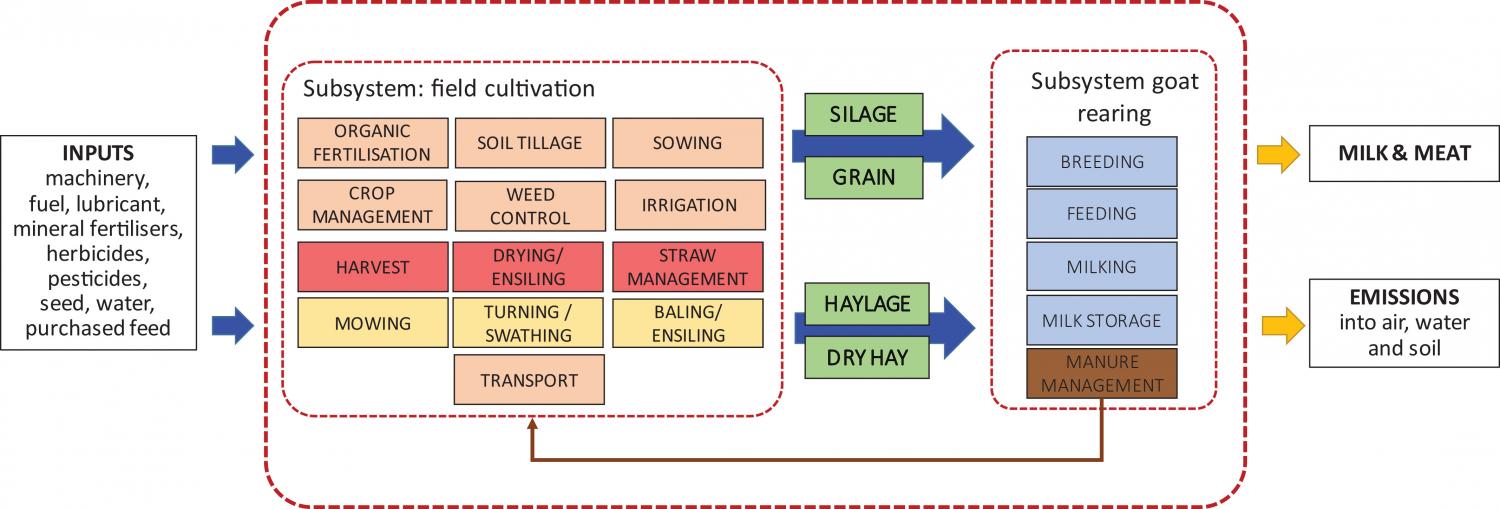
Elsevier, Livestock Science, Volume 231, January 2020
Although numbers are still low compared to cattle rearing, intensive dairy goat farms have been widely spreading in the Italian livestock systems. Since goats are quite rustic, they can easily adapt to different management practices; however, improving the efficiency can make the difference, both in productivity and on the environmental impact attributed to goat milk production. In the present study, the Life Cycle Assessment (LCA) approach was used to quantify the potential environmental impact of goat milk production system in 17 farms in Lombardy (Northern Italy). Together with the environmental assessment, statistical analysis was carried out in order to determine whether it was possible to identify any relation among the variables that characterise this farming system. From an environmental point of view, it has been shown that the lower the individual milk production, the more it affects the environmental impact: specifically, the carbon footprint appears higher than the one emitted by cattle milk production. Climate Change resulted, on average, equal to 2.67 kg CO2 eq/kg Fat and Protein Corrected Milk (FPCM) with a wide variability (min: 1.12 kg CO2 eq/kg FPCM; max: 5.05 kg CO2 eq/kg FPCM). Purchased feed was the main hotspot for several environmental impact categories (such as freshwater eutrophication, land use and mineral, fossil and renewable resources depletion). Enteric emissions and emissions from manure storage were hotspots for climate change, particulate matter and terrestrial acidification. The C sequestration during crop cultivation was not considered. As shown by the statistical analysis, the main driver which influenced the 6 main impact categories was, in fact, individual milk production. The environmental assessment was also performed considering a second Functional Unit (FU) (i.e. 1 ha of land) and the statistical analysis conducted on this FU showed the relevance of livestock intensity. In addition to this, the statistical analysis also showed how a restricted land availability can negatively affect the environmental outcome. This study represents one of the first studies on the environmental impact assessment of dairy goat milk production. Additionally, studying two FUs and using a statistical analysis approach helped to identify the main management options to which farmers should pay attention to improve goat milk production from an environmental point of view.
